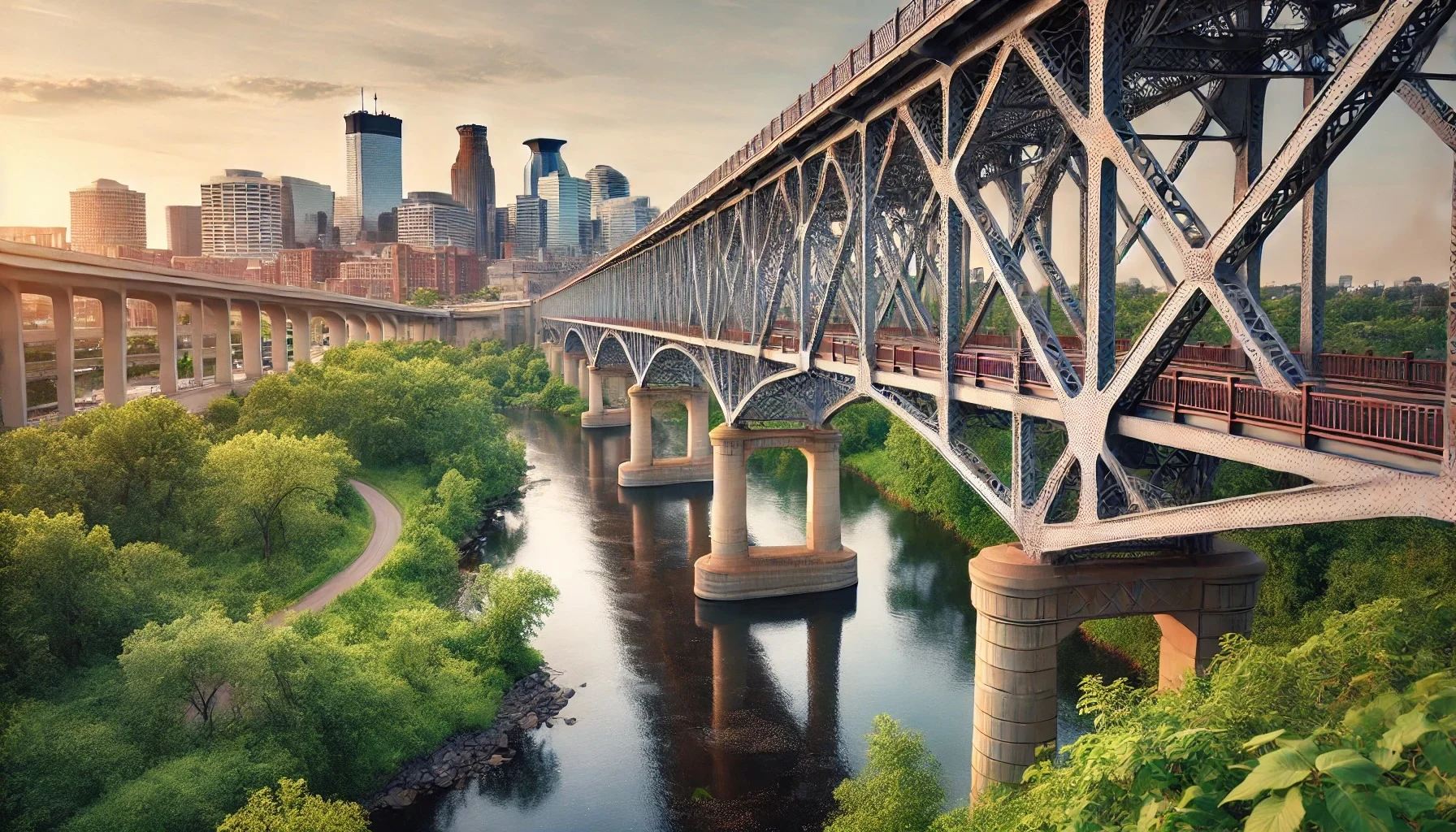
The I-35W Mississippi River Bridge Collapse
by: The Calamity Calendar Team
August 1, 2007
A Routine Rush Hour Turns Tragic
On a typical summer evening, the I-35W Mississippi River Bridge was teeming with the usual rush hour traffic. The eight-lane steel truss arch bridge was a vital artery, channeling over 140,000 vehicles daily across the Mississippi River. Constructed in 1967, the bridge had long been a cornerstone of the Minneapolis-St. Paul metropolitan infrastructure. However, beneath the surface of its utility, a silent danger loomed.
For years, concerns had been raised about the structural integrity of the bridge. Inspections revealed troubling signs—fatigue cracks and corrosion in the bearings—that pointed to potential risks. Despite these warnings, significant remedial action was never undertaken, setting the stage for a disaster that would unfold with devastating speed.
The Collapse Unfolds
6:05 PM (CDT)
Rush hour traffic was at its peak, with approximately 111 vehicles making their way across the bridge. Commuters, unaware of the impending catastrophe, moved at their usual pace.
Thanks for subscribing!
6:05 PM - 6:10 PM
In a matter of minutes, the unthinkable happened. The central span of the bridge suddenly gave way, collapsing into the Mississippi River and onto its banks. Vehicles were plunged into the water, while others were trapped in the twisted wreckage. The tranquil summer evening was shattered by the chaos of crumbling concrete and steel.
A Swift and Heroic Response
The collapse triggered an immediate response from local and state emergency services, who faced the daunting task of rescuing survivors from the swift currents and debris-strewn river. Federal agencies quickly joined the efforts, providing crucial support in the race against time.
The Human and Economic Toll
The human impact of the disaster was profound. Thirteen lives were lost, and 145 individuals sustained injuries ranging from minor to severe. The psychological scars ran deep, affecting not just those directly involved but the wider community that reeled from the tragedy.
The economic repercussions were equally significant. The bridge’s destruction and the resultant damage to surrounding infrastructure caused an estimated $234 million in costs, disrupting local and regional commerce. The collapse underscored the vital importance of maintaining and investing in infrastructure.
Recovery and Rebuilding
Immediate Response
Search and rescue operations were launched swiftly, with divers braving the treacherous waters to locate survivors. The National Transportation Safety Board (NTSB) commenced a meticulous investigation to determine the cause of the collapse.
Long-Term Recovery
The Minnesota Department of Transportation (MnDOT) acted promptly to reroute traffic and initiate plans for a replacement bridge. Within 14 months, a new bridge—the I-35W Saint Anthony Falls Bridge—was designed, constructed, and opened in September 2008. This remarkable feat of engineering symbolized resilience and a commitment to restoring vital infrastructure.
Learning from Tragedy
Cause of Collapse
The NTSB’s investigation revealed that the primary cause of the collapse was a design flaw involving undersized gusset plates. These critical components failed under the combined stress of the bridge’s weight and additional construction loads, leading to the catastrophic failure.
Policy Changes
The disaster prompted a nationwide reassessment of bridge safety protocols. The federal government allocated $250 million for immediate repairs and inspections of similar structures. Increased funding and more rigorous inspection protocols were implemented to prevent a recurrence of such a tragedy.
A Legacy of Vigilance
Today, the collapse of the I-35W Mississippi River Bridge serves as a grim reminder of the importance of infrastructure maintenance and safety. Improvements in bridge design, construction, and inspection have been adopted to safeguard against similar failures. The incident is studied in engineering and public safety courses, emphasizing the need for vigilant oversight and proactive measures to protect public safety.
Stay in the Loop!
Become a Calamity Insider and get exclusive Calamity Calendar updates delivered straight to your inbox.
Thanks! You're now subscribed.